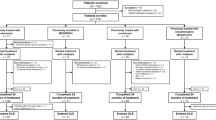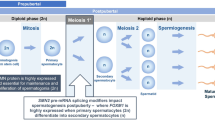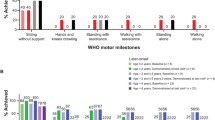Abstract
Spinal muscular atrophy (SMA) is an inherited disease characterized by progressive motor neuron death and subsequent muscle weakness and is caused by deletion or mutation of survival motor neuron (SMN) 1 gene. Protecting spinal motor neuron is an effective clinical strategy for SMA. The purpose of this study was to investigate the potential effect of an anti-epileptic drug levetiracetam on SMA. In the present study, we used differentiated spinal motor neurons (MNs) from SMA patient-derived induced pluripotent stem cells (SMA-iPSCs) to investigate the effect of levetiracetam. Levetiracetam promoted neurite elongation in SMA-iPSCs-MNs. TUNEL-positive spinal motor neurons were significantly reduced by levetiracetam in SMA-iPSCs-MNs. In addition, the expression level of cleaved-caspase 3 was decreased by levetiracetam in SMA-iPSCs-MNs. Furthermore, levetiracetam improved impaired mitochondrial function in SMA-iPSCs-MNs. On the other hand, levetiracetam did not affect the expression level of SMN protein in SMA-iPSCs-MNs. These findings indicate that levetiracetam has a neuroprotective effect for SMA.




Similar content being viewed by others
References
Crawford TO, Pardo CA (1996) The neurobiology of childhood spinal muscular atrophy. Neurobiol Dis 3:97–110
Lefebvre S, Bürglen L, Reboullet S, Clermont O, Burlet P, Viollet L et al (1995) Identification and characterization of a spinal muscular atrophy-determining gene. Cell 80:155–165
Rochette CF, Gilbert N, Simard LR (2001) SMN gene duplication and the emergence of the SMN2 gene occurred in distinct hominids: SMN2 is unique to Homo sapiens. Hum Genet 108:255–266
Lorson CL, Hahnen E, Androphy EJ, Wirth B (1999) A single nucleotide in the SMN gene regulates splicing and is responsible for spinal muscular atrophy. Proc Natl Acad Sci USA 96:6307–6311
Pellizzoni L, Charroux B, Dreyfuss G (1999) SMN mutants of spinal muscular atrophy patients are defective in binding to snRNP proteins. Proc Natl Acad Sci USA 96:11167–11172
Zerres K, Wirth B, Rudnik-Schoneborn S (1997) Spinal muscular atrophy—clinical and genetic correlations. Neuromuscul Disord 7:202–207
Finkel RS, Chiriboga CA, Vajsar J, Day JW, Montes J, De Vivo DC et al (2016) Treatment of infantile-onset spinal muscular atrophy with nusinersen: a phase 2, open-label, dose-escalation study. Lancet 388:3017–3026
Hsieh-Li HM, Chang JG, Jong YJ, Wu MH, Wang NM, Tsai CH et al (2000) A mouse model for spinal muscular atrophy. Nat Genet 24:66–70
Sumner CJ, Huynh TN, Markowitz JA, Perhac JS, Hill B, Coovert DD et al (2003) Valproic acid increases SMN levels in spinal muscular atrophy patient cells. Ann Neurol 54:647–654
Ebert AD, Yu J, Rose FF Jr, Mattis VB, Lorson CL, Thomson JA et al (2009) Induced pluripotent stem cells from a spinal muscular atrophy patient. Nature 457:277–280
Sareen D, Ebert AD, Heins BM, McGivern JV, Ornelas L, Svendsen CN (2012) Inhibition of apoptosis blocks human motor neuron cell death in a stem cell model of spinal muscular atrophy. PLoS ONE 7:e39113
Ohuchi K, Funato M, Kato Z, Seki J, Kawase C, Tamai Y et al (2016) Established stem cell model of spinal muscular atrophy is applicable in the evaluation of the efficacy of thyrotropin-releasing hormone analog. Stem Cells Transl Med 5:152–163
Ando S, Funato M, Ohuchi K, Kameyama T, Inagaki S, Seki J et al (2017) Edaravone is a candidate agent for spinal muscular atrophy: in vitro analysis using a human induced pluripotent stem cells-derived disease model. Eur J Pharmacol 81:161–168
Lynch BA, Lambeng N, Nocka K, Kensel-Hammes P, Bajjalieh SM, Matagne A et al (2004) The synaptic vesicle protein SV2A is the binding site for the antiepileptic drug levetiracetam. Proc Natl Acad Sci USA 101:9861–9866
Lukyanetz EA, Shkryl VM, Kostyuk PG (2002) Selective blockade of N-type calcium channels by levetiracetam. Epilepsia 43:9–18
Miyazaki I, Murakami S, Torigoe N, Kitamura Y, Asanuma M (2016) Neuroprotective effects of levetiracetam target xCT in astrocytes in parkinsonian mice. J Neurochem 136:194–204
Stockburger C, Miano D, Baeumlisberger M, Pallas T, Arrey TN, Karas M et al (2016) A mitochondrial role of SV2a protein in aging and alzheimer's disease: studies with levetiracetam. J Alzheimers Dis 50:201–215
Hishida A (2007) Clinical analysis of 207 patients who developed renal disorders during or after treatment with edaravone reported during post-marketing surveillance. Clin Exp Nephrol 11:292–296
Delanty N, Jones J, Tonner F (2012) Adjunctive levetriacetam in children, adolescents, and adults with primary generalized seizures: open-label, noncomparative, multicenter, long-term follow-up study. Epilepsia 53:111–119
Yamamoto H, Itoh N, Kawano S, Yatsukawa Y, Momose T, Makio T et al (2011) Dual role of the receptor Tom20 in specificity and efficiency of protein import into mitochondria. Proc Natl Acad Sci USA 108:91–96
Parker GC, Li X, Anguelov RA, Toth G, Cristescu A, Acsadi G (2008) Survival motor neuron protein regulates apoptosis in an in vitro model of spinal muscular atrophy. Neurotox Res 13:39–48
Roy N, Mahadevan MS, McLean M, Shutler G, Yaraghi Z, Farahani R et al (1995) The gene for neuronal apoptosis inhibitory protein is partially deleted in individuals with spinal muscular atrophy. Cell 80:167–178
Elmore S (2007) Apoptosis: a review of programmed cell death. Toxicol Pathol 35:495–516
Eyal S, Yagen B, Sobol E, Altschuler Y, Shmuel M, Bialer M (2004) The activity of antiepileptic drugs as histone deacetylase inhibitors. Epilepsia 45:737–744
Danial NN, Korsmeyer SJ (2004) Cell death: critical control points. Cell 116:205–219
Salvioli S, Bonafè M, Capri M, Monti D, Franceschi C (2001) Mitochondria, aging and longevity—a new perspective. FEBS Lett 492:9–13
Shadel GS, Horvath TL (2015) Mitochondrial ROS signaling in organismal homeostasis. Cell 163:560–569
Chinopoulos C, Adam-Vizi V (2006) Calcium, mitochondria and oxidative stress in neuronal pathology. Novel aspects of an enduring theme. FEBS J 273:433–450
Orth M, Schapira AH (2001) Mitochondria and degenerative disorders. Am J Med Genet 106:27–36.
Pickles S, Vande Velde C (2012) Misfolded SOD1 and ALS: zeroing in on mitochondria. Amyotroph Lateral Scler 13:333–340
Acsadi G, Lee I, Li X, Khaidakov M, Pecinova A, Parker GC et al (2009) Mitochondrial dysfunction in a neural cell model of spinal muscular atrophy. J Neurosci Res 87:2748–2756
Miller N, Shi H, Zelikovich AS, Ma YC (2016) Motor neuron mitochondrial dysfunction in spinal muscular atrophy. Hum Mol Genet 25:3395–3406
Bordet T, Berna P, Abitbol JL, Pruss RM (2010) Olesoxime (TRO19622): a novel mitochondrial-targeted neuroprotective compound. Pharmaceuticals 3:345–368
Liang JR, Martinez A, Lane JD, Mayor U, Clague MJ, Urbé S (2015) USP30 deubiquitylates mitochondrial Parkin substrates and restricts apoptotic cell death. EMBO Rep 16:618–627
Magnoni R, Palmfeldt J, Christensen JH, Sand M, Maltecca F, Corydon TJ, West M, Casari G, Bross P (2013) Late onset motoneuron disorder caused by mitochondrial Hsp60 chaperone deficiency in mice. Neurobiol Dis 54:12–23
Takahashi K, Tanabe K, Ohnuki M, Narita M, Ichisaka T, Tomoda K et al (2007) Induction of pluripotent stem cells from adult human fibroblasts by defined factors. Cell 131:861–872
Acknowledgements
We greatly appreciate the patients and their family who cooperated with this study. We thank Prof. Kenji Osafune (Kyoto University) for providing the human iPSC line 201B7. This study was supported in part by Health and Labor Sciences Research Grants of Research on Measures for Intractable Diseases from the Ministry of Health, Labor and Welfare (H26-itaku(nan)-ippan-059).
Author information
Authors and Affiliations
Corresponding author
Ethics declarations
Conflict of interest
The authors declare that there are no conflicts of interest.
Ethics Statement
The procedures used in the experiments on human induced pluripotent stem cells (Control iPSCs; 201B7 line) adhered to the tenets of the Declaration of Helsinki. The 201B7 line was generated from adult human dermal fibroblasts which was purchased from Cell Applications, Inc (San Diego, CA, USA) [36]. The somatic cells collection from the patients, the establishment of patient-derived iPSCs, and pathological analysis of differentiated iPSCs including evaluation of the potential drug efficacy were planned in this study. These planed protocols were approved by the Ethics Review Committee of the National Hospital Organization, Nagara Medical Center (Approval Number: 26-15), and informed consents were obtained from the parents of our pediatric patients. Informed consents were obtained from the subjects after explanation of the nature and possible consequences of the study.
Additional information
Publisher's Note
Springer Nature remains neutral with regard to jurisdictional claims in published maps and institutional affiliations.
Rights and permissions
About this article
Cite this article
Ando, S., Funato, M., Ohuchi, K. et al. The Protective Effects of Levetiracetam on a Human iPSCs-Derived Spinal Muscular Atrophy Model. Neurochem Res 44, 1773–1779 (2019). https://doi.org/10.1007/s11064-019-02814-4
Received:
Revised:
Accepted:
Published:
Issue Date:
DOI: https://doi.org/10.1007/s11064-019-02814-4




